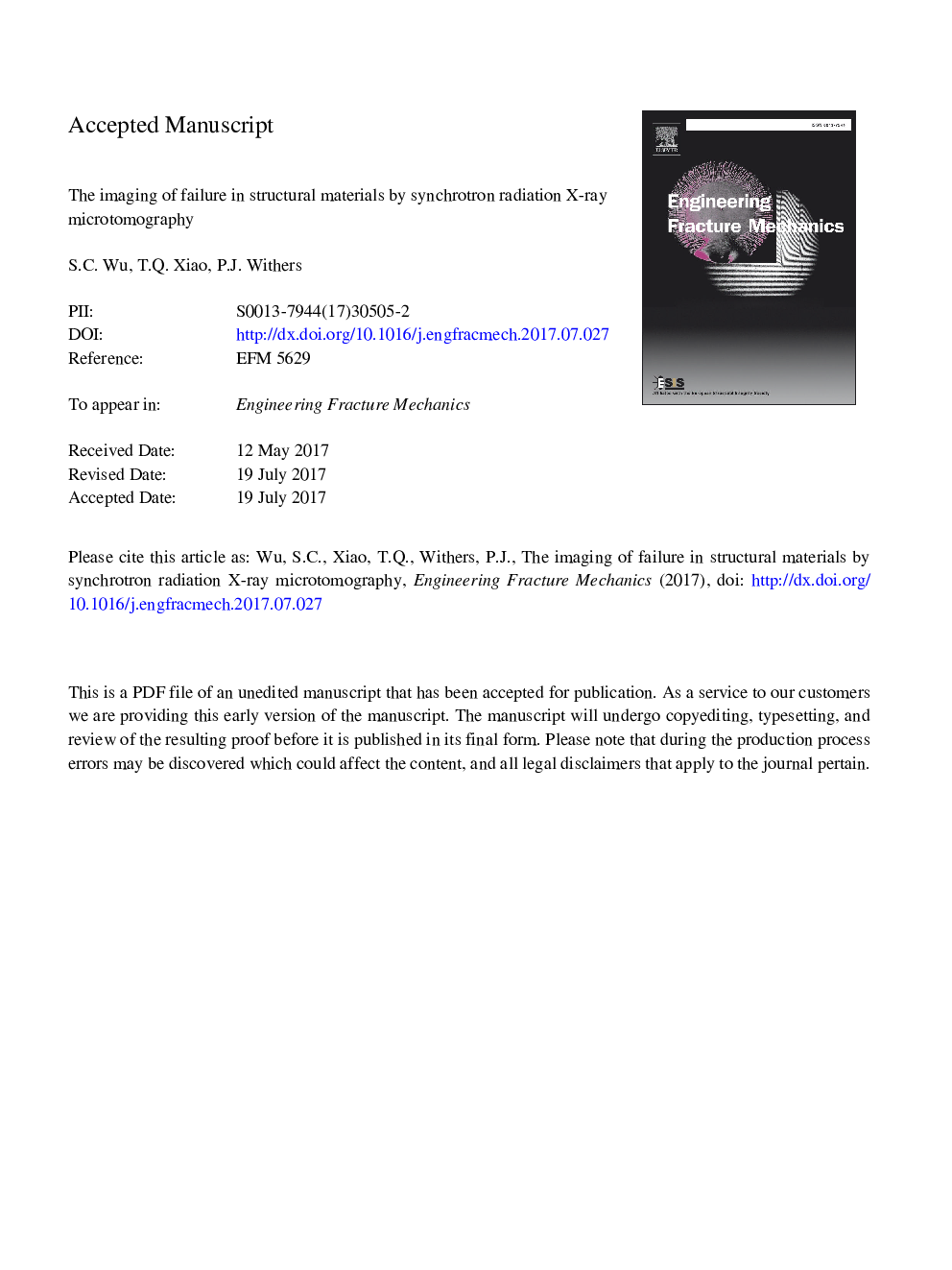| Article ID | Journal | Published Year | Pages | File Type |
|---|---|---|---|---|
| 5013801 | Engineering Fracture Mechanics | 2017 | 56 Pages |
Abstract
The initiation and propagation of short cracks are critical to the detailed understanding of the failure mechanisms of engineering materials and structures. Therefore, for a safety critical component, it is beneficial to be able to follow the progress of cracks in loaded structures and real environments ideally at sub-micron spatial resolution and/or sub-second time resolution. Here we review the great progress that has been made in the application of synchrotron radiation X-ray computed microtomography (SR-μCT) to the study of internal damage accumulation and evolution in structural materials including cast irons and steel, nickel superalloys, lightweight titanium and aluminum alloys as well as metallic, ceramic and polymer composite materials together with additatively manufactured or three-dimensional (3D) printed metallic materials. SR-μCT is shedding light on the complex interactions of cracks with intrinsic porosity, precipitates and intermetallic inclusions and grain structure, as well as macroscopic features such as holes and joints. Furthermore it is enabling qualitative and quantitative relations between the microstructural features and engineering performance to be established and validated under realistic service loading and environmental conditions. Here we introduce the basic 3D and time-lapse (4D) tomographic methods and discuss their strengths and limitations across a range of the applications, as well as identify opportunities for the future.
Keywords
Related Topics
Physical Sciences and Engineering
Engineering
Mechanical Engineering
Authors
S.C. Wu, T.Q. Xiao, P.J. Withers,
